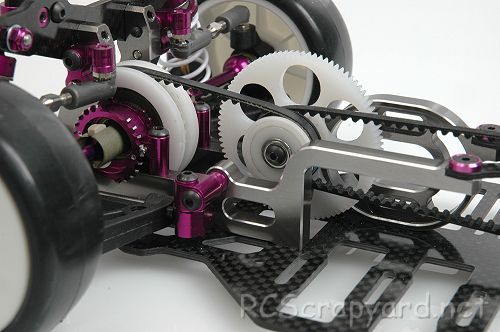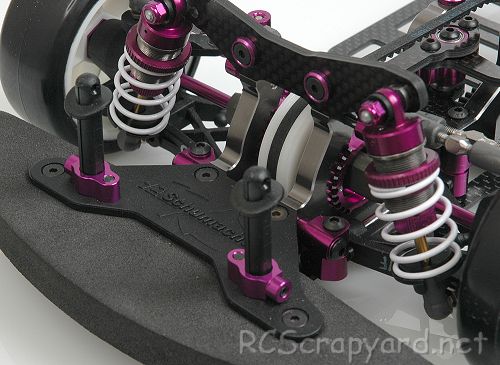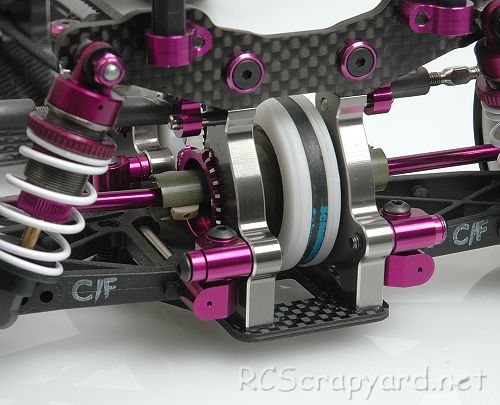

|
|
|


|
|
1/10 Scale Electric Rally/Touring Car:
Schumacher Mi3 - K073 - Radio Controlled ModelHistory and Info for the Schumacher Mi3:
In May 2007, three years after the release of the successful Mi2, Schumacher introduced the Mi3.
▼ Scroll Down for More Images ▼
|
|
|








|
|
|

★ Schumacher Mi3 ★

★ Schumacher Mi3 ★

★ Schumacher Mi3 Chassis ★

|
Buying a Used Schumacher Mi3
|
|
Manufacturers and Brands Catalogued, Listed and Reviewed by RC-Scrapyard.
At present, the RC Model Manufacturers, Brands and Distributors covered by us are: ABC Hobby, Academy, Acme Racing, Agama Racing, Amewi, Ansmann Racing, ARRMA, Team Associated, Atomic RC, Axial, AYK, Bolink, BSD Racing, Capricorn, Carisma, Carson, Caster Racing, Cen, Corally, Custom Works, Durango, Duratrax, ECX - Electrix, Exceed RC, FG Modellsport, FS-Racing, FTX, Fujimi, Gmade, GS-Racing, Harm, HBX, Helion, Heng Long, Himoto Racing, Hirobo, Hitari, Hobao, Hong-Nor, Hot Bodies, HPI, HSP, Intech, Integy, Jamara, JQ Products, Kawada, Kyosho, Losi, LRP, Maisto, Mardave, Marui, Maverick, MCD Racing, Megatech, Mugen, New Bright, Nichimo, Nikko, Nkok, Ofna, Pro-Pulse, Protech, PTI, RC4WD, Redcat Racing, RJ-Speed, Robitronic, Schumacher, Seben, Serpent, Smartech, Sportwerks, Step-Up, Tamiya, Team-C Racing, Team Magic, Thunder Tiger, Tomy, Top Racing, Traxxas, Trinity, Tyco, Vaterra RC, Venom, VRX Racing, WLToys, X-Factory, Xmods, Xpress, Xray, XTM, Yankee RC, Yokomo, ZD Racing and Zipzaps. |
|
Hints, Tips and Information
Toe Angle - for Steering and Straight Line Stability
When you first build your RC model car, you will no doubt have made all the settings advised in the manufacturers' manual and will take it out on the back yard not thinking of things like camber, caster or toe-in - I know I did. It's only when you get competitive that you start learning about these things and just what a big difference they can make to the handling of your car. One of the more effective of these adjustments is Toe-in. |
|
Hints, Tips and Information
The Importance of Balancing your Model Car Wheels
The day I passed my driving test at the young age of 17, the first thing I did was to drive over to my girlfriends house and take her out to a long straight stretch of road close by, where the boy racers would often congregate. No one was around that day, so the road was relatively quiet. I slowly went through the gears and we were soon up to 65 with no problems, but as we got closer to 70, my hands began to sense a small vibration on the steering wheel. By the time we hit 75, the steering wheel and the whole car was vibrating wildly. My girlfriend was hysterical, screaming for me to "slow down!" I did of course and tried to calm her down. How I Balanced my Model Car Wheels
Wheel balancing equipment for RC cars is now available on line and from most RC model shops, but back then I had to make my own using the rear end of an old Tamiya F1 car. |
|
RC Models:
|
Radio & Motors: |
Other
Accessories: |